Table of Contents
Introduction
When it comes to cooking, the choice of cookware plays a significant role in ensuring the safety and healthiness of your meals. With the wide variety of cookware materials available on the market, it’s essential to know which types are safe for your health. In this article, we’ll explore various cookware materials, their benefits, concerns, and tips for making the right choices.
Choosing Safe Cookware for Healthy Meals
Cooking delicious meals is a joy, but have you considered the impact your cookware might have on your health? The material your pots and pans are made of can significantly influence the safety of your food. Let’s explore different cookware materials and their implications for your well-being.
1. Stainless steel cookware
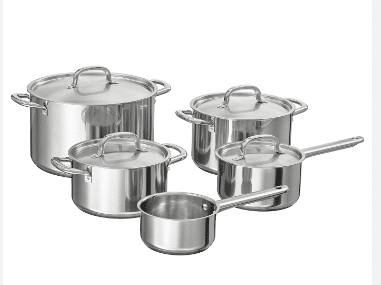
Stainless Steel: The Trusty Companion
Stainless steel is a popular choice due to its durability and non-reactive nature. It doesn’t leach harmful chemicals into your food, making it a safe option for cooking. Look for high-quality stainless steel with a core of aluminum or copper to ensure even heat distribution.
Advantages
Stainless steel cookware is durable and resistant to staining and rust. It doesn’t react with food, making it a safe choice.
Considerations
Be cautious about burning food or using high heat, as this can cause discoloration and affect the cookware’s appearance.
2. Cast iron cookware

Cast Iron: A Time-Tested Classic
Cast iron is known for its excellent heat retention and ability to impart trace amounts of iron into food, which can be beneficial for those with iron deficiencies. However, it requires seasoning to maintain a non-stick surface and prevent rusting. If seasoned and maintained properly, it’s a safe and reliable choice.
Pros
Cast iron cookware is known for its excellent heat retention and even heating. It can add a small amount of iron to your food, which can be beneficial.
Cautions
To maintain its seasoning and prevent rust, it’s essential to dry cast iron cookware thoroughly after washing and occasionally re-season it.
3.Non-Stick Cookware
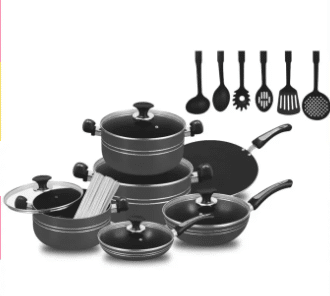
Non-Stick Cookware: Teflon and Alternatives
Non-stick cookware like Teflon has faced scrutiny due to the potential release of toxic fumes at high temperatures. PFOA, a chemical used in manufacturing Teflon, has been linked to health issues. To combat this, many manufacturers now offer PFOA-free alternatives. However, proper care and avoiding overheating are crucial for safe use.
Benefits
Non-stick cookware is known for its ease of use and cleaning. It requires less oil for cooking, which is beneficial for health-conscious individuals.
Concerns
However, non-stick cookware can release harmful chemicals when overheated, posing health risks. Ensure you use it at low to medium temperatures and replace it if it shows signs of wear and tear.
4.Aluminum Cookware
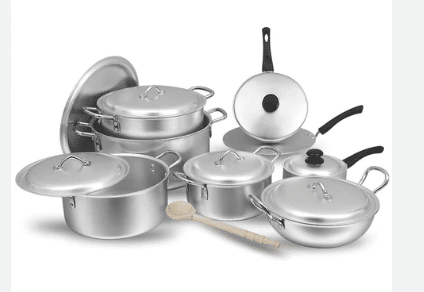
Aluminum cookware is lightweight and an excellent conductor of heat. However, concerns arise regarding its potential to leach into food, especially acidic dishes. Prolonged exposure to high levels of aluminum has been linked to health problems, although the evidence is not conclusive. Anodized aluminum, coated to prevent leaching, is a safer choice.
Advantages
Aluminum cookware is lightweight and affordable. Anodized aluminium is a safer choice, as it’s non-reactive and durable.
Safety Precautions
To prevent aluminum from leaching into your food, avoid cooking acidic dishes on bare aluminum cookware.
5.Copper Cookware
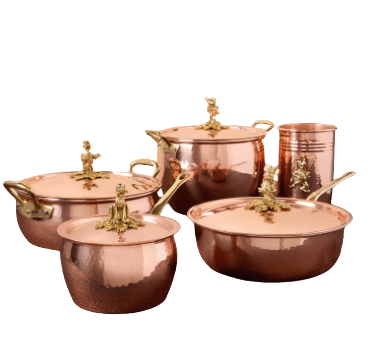
Copper: Beauty with Caution
Copper cookware is exceptional for precise heat control. Yet, when exposed to certain foods, copper can leach into them, leading to health risks. To prevent this, most copper cookware is lined with stainless steel or other non-reactive materials.
Pros and Cons
Copper cookware provides precise temperature control, making it a favorite of professional chefs. However, excessive copper exposure can be harmful, so ensure the cookware has a safe lining.
6.Ceramic Cookware
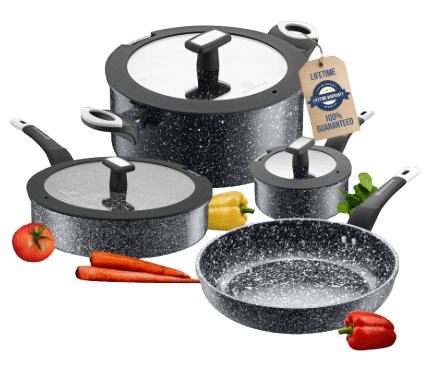
Ceramic and Glass: Safe and Versatile
Ceramic and glass cookware are generally safe choices. They are non-reactive and free from chemicals that could leach into food. They are also easy to clean and maintain, making them a popular option for health-conscious individuals.
Benefits
Ceramic cookware is non-toxic and eco-friendly. It’s a great choice for those looking for a safe and stylish option.
Watch-outs
Avoid sudden temperature changes, as ceramic cookware can crack. Also, look for lead-free options.
-
Silicone: The New Kid on the Block
Silicone cookware is a relatively recent addition to the kitchen. It’s non-toxic, flexible, and heat-resistant. While it’s considered safe for most cooking applications, long-term studies on its safety are still limited.
![]()
Glass Cookware
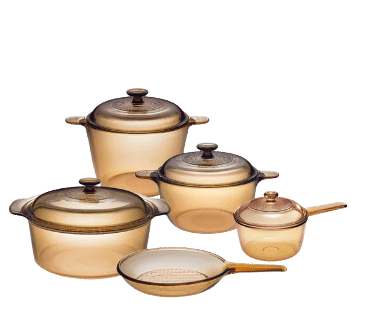
Advantages
Glass cookware is non-reactive and transparent, allowing you to monitor your cooking. It’s safe for both baking and stovetop cooking.
Drawbacks
Handle with care, as glass cookware is fragile and can shatter if exposed to extreme temperature changes.
Considerations for Healthy Cooking
When choosing cookware for your kitchen, consider the following tips for a healthier cooking experience:
- Avoid Scratched or Damaged Cookware:
Scratched surfaces can lead to the leaching of harmful chemicals or metals into your food.
- Use the right utensils:
Wooden or silicone utensils can prevent damage to the cookware surface.
- Moderation is key.
Use a variety of cookware to avoid overexposure to a particular material.
- Follow Manufacturer Guidelines:
Adhere to the care and usage instructions provided by the cookware manufacturer.
Conclusion
The safety of your cookware directly impacts the healthiness of your meals. Stainless steel, cast iron, and ceramic or glass cookware are among the safest options. Always consider the materials used, their reactivity, and how to maintain them properly to ensure the safety and quality of your cooking.
When making your choice, prioritize not just the dish you’re preparing but also the long-term health benefits your cookware can offer. Cooking with the right materials is not just about taste but also about a healthier, happier you.
In the world of cookware materials, there’s no one-size-fits-all answer to what’s safest for your health. Each material has its advantages and disadvantages. To ensure your safety, always follow the manufacturer’s instructions, use appropriate utensils, and maintain your cookware properly. Ultimately, the right choice depends on your cooking habits and preferences.
This article explores the variety of cookware materials and their impact on health, ensuring a safe and informative guide for readers looking to make healthier choices in the kitchen.
FAQs
- Is non-stick cookware entirely unsafe?
- No, it can be safe if used at low to medium temperatures and replaced when necessary.
- How can I prevent stainless steel cookware from discoloring?
- Avoid burning food and using high heat; proper care and cleaning can help maintain its appearance.
- Is cast-iron cookware a good source of dietary iron?
- Yes, it can add a small amount of iron to your food, which can be beneficial.
- Can copper cookware be harmful?
- Excessive copper exposure can be harmful, so ensure the cookware has a safe lining.
- Are there lead-free ceramic cookware options?
- Yes, for safety, always choose lead-free ceramic cookware.
